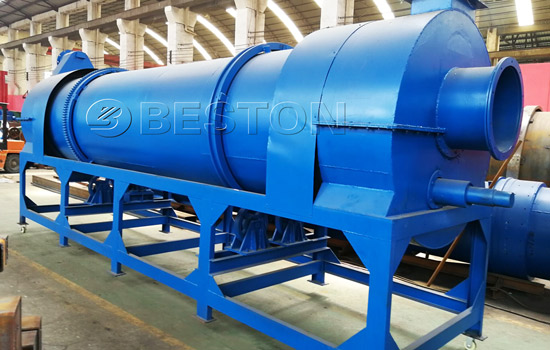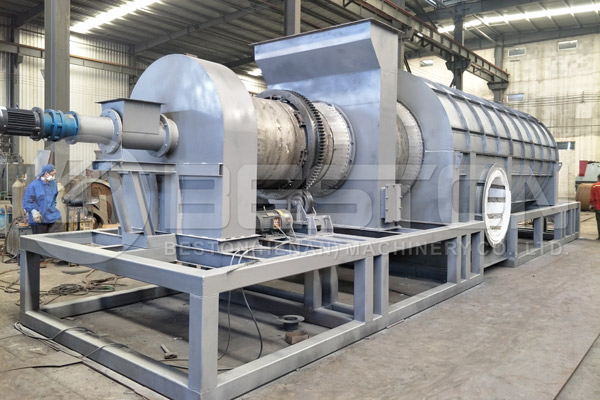The straw to charcoal machine uses a process of crushing, drying, volatile smoke, high-temperature carbonization, charcoal enrichment, sulfur emissions, cooling of the end product, which finally ends in a charcoal product made from straw along with other by-products such as combustible gas, wood vinegar, and tar.

Carbonization technology is the core component of the straw to charcoal machine. You can also get this machine from sawdust making machine manufacturer. Carbonization of waste such as straw has gone onto extend the raw materials that can be used to produce charcoal. The charcoal produced from biomass-waste materials like straw, sawdust, wood and more is known as biomass charcoal and referenced as a type of bio-carbon.
The Working Processes Of Straw To Charcoal Machine
Straw to charcoal machines is efficient when it comes to processing a raw material like straw into different types of charcoal. These waste-to-energy projects are useful in a number of industries, which uses an efficient heating source which is generated from the raw materials in order to produce end products such as wood vinegar, charcoal, and wood tar. These end products all hold their own value and are used in a number of different industries. You can visit https://bestonasia.com/ to get videos that show the process specifically.
The raw materials generally include forestry waste, straw, fruit shells, weeds, biomass waste, nuts, MSW (municipal solid waste), and sewage sludge. The 2 requirements when it comes to pre-treatment of these raw materials, is that the moisture content cannot exceed 20% or the material need to be passed through a dryer. The second requirement involves ensuring the size of the waste materials does not exceed 50mm. For larger items, they first need to be passed through a crusher.

The biomass carbonization machine consists of a carbonization host, condenser system, spray tower, cooling system, and a discharging system.
These carbonization processes typically involve 4 main steps. This includes high-temperature pyrolysis, sulfur emission, smoke discharge, and finally charcoal enrichment.
In general, the primary heating source includes natural gas or charcoal. After the furnace has been heated for 30 minutes, the straw generates a combustible gas, which is then purified in a spray tower which then supplies heat to the furnace or the dryer.
The entire production process of Straw to Charcoal is completely continuous, which helps to drastically improve working efficiency along with output yield. It also assists with saving costs on the requirement of labor.
These charcoal yields are typically 3:1 or 4:1. Yet these ratios can differ due to external conditions and different types of raw materials.
The end products generated through straw carbonization include wood vinegar, combustible gas, tar, and charcoal. Each of these end products includes wide applications which create significant economic benefits along with keeping the environment in mind. So the charcoal production line has a bright future.
The straw charcoal features a high-heat value which can be used as a fuel directly, or as BBQ charcoal which is a far more environmentally friendly option when compared to traditional coal.
The wood vinegar and tar is used in agricultural industries and is a great additive to chemical fertilizers. The combustible gas produced is either recovered directly or used in other industries in the form of fuel.